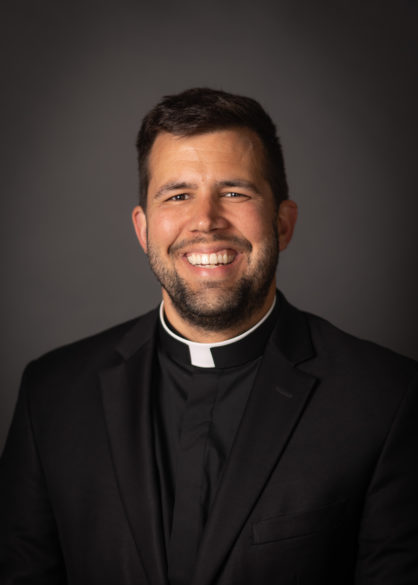New posters are coming soon! Each year I’m excited to publish a new seminarian poster with the happy faces of our current seminarians. I love to see how guys ‘move up the ranks.’ For example, in 2020 and 2021, Grayson Foley was in the last spot on the poster and now he’s fourth in line (almost on the top row!) as he continues to progress through the program. Will Foggo is now second on the list, and it seemed like yesterday that he was second to last! It’s also fun to see when guys get their ‘collar.’ Deacon Tristan Stovall spent three years on the poster collar-less, but now he’s been wearing his roman collar for years as he makes the final approach to priestly ordination.

One of the biggest changes this year is the way that the ‘classes’ are listed on the poster. In years past, we designated the seminarians according to their academic standing. A seminarian listed as 2nd Philosophy meant that he was in his second year of philosophy studies. But the US Bishops recently approved a new Program for Priestly Formation, and instead of focusing on the academic standing of each seminarian, they are asking us to see their formation through the lens of ‘stages.’
The first stage that is required for seminarians now is the Propaedeutic Stage, or preparatory stage. During this time, the seminarian learns how to be a seminarian, and his class load is less than a typical undergraduate student. Once he clears this stage of formation, he moves onto the Discipleship Stage. During this time, the seminarian is expected to be growing in Christian virtue as a student of Jesus, the High Priest. He needs to show growth in charity, and of course continue to pass his classes as they start to ramp up to a normal undergraduate load. By the end of this stage, this man should be a public man of prayer and virtue, and someone who is showing real potential to be a pastor in the church.
The next step is the Configurative Stage, where the man receives Candidacy (he starts to wear the Roman collar), and he is now a public man of the church. He is being configured through continued study, prayer and practice into a man who is not only a disciple, but a shepherd. Once he has completed this stage, the seminarian is ready for diaconate ordination, or the Pastoral Synthesis Stage. During his time as a deacon, the seminarian uses all that he has learned in seminary formation and applies it to his life in the diocese and in a specific parish. Using the language of the new program Deacon Tristan, for example is in the Pastoral Synthesis Stage of his journey to priesthood, instead of his 4th Year of Theology.
It may seem tedious to change this language, but it is certainly helpful for me as I walk with our seminarians. I need to make sure I’m not just worried about whether they pass their classes, but I need to make sure I’m preparing them to go to the next stage of discernment. So far, I’ve heard good things from our men regarding these changes to their formation, and I believe the church is right to focus on formation, rather than simply completion of academic requirements.
